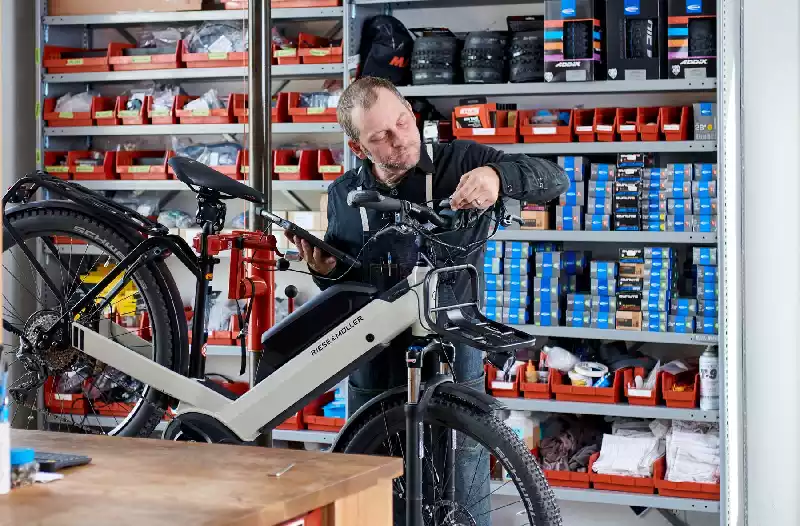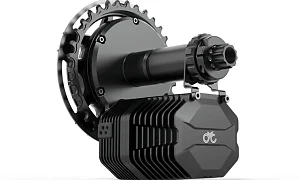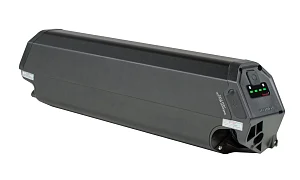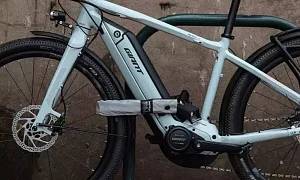E-bike riders aren’t just hitting the throttle — they’re also digging into code and wiring. A growing number of cyclists are hacking their e-bikes to unlock more speed, power, or customization than the factory settings allow.
Because e-bikes are part mechanical and part digital, they offer a unique playground for tech-savvy enthusiasts. But as the popularity of hacking grows, so do the concerns around legality, ethics, and public safety.
In this article, we’ll break down what e-bike hacking actually means, how it works, and what you should know before you try it (or buy a bike that’s already been modded).
What Is E-Bike Hacking?
E-bike hacking refers to modifying the digital or physical systems of an electric bike to change how it performs. This could mean tweaking the bike’s software, swapping hardware components, or bypassing built-in safety features.
Why Do People Hack E-Bikes?
Most riders who modify their e-bikes are looking for:
- More speed – Factory limits cap e-bike speeds at 20–28 mph, depending on class. Hacking removes those caps.
- Higher power output – More wattage means faster acceleration and better hill climbing.
- Customized controls – Some riders want more control over throttle behavior or pedal-assist modes.
- Hidden features – Certain features may be locked behind paywalls or regional restrictions.
How Are E-Bikes Hacked?
E-bike hacking falls into two main categories: software hacks and hardware mods.
Software Hacks
These involve changing or overriding the bike’s internal programming:
- Flashing custom firmware to remove speed limits or unlock new features
- Using third-party apps to access hidden settings in the controller
- Connecting a laptop via USB to manually tune the controller’s performance
Pro Tip: Some e-bike brands offer official tuning apps — start there before diving into riskier modifications.
Hardware Hacks
Physical modifications to the bike’s electronics or components:
- Sensor bypass kits that trick the bike into reading slower speeds
- Swapping the controller for an aftermarket version with higher limits
- Adding a throttle to pedal-assist-only bikes
These mods can dramatically change performance but may also lead to overheating, electrical damage, or loss of warranty.
Pro Tip: Always research how a mod could impact your specific motor and battery system — not all setups handle the extra load the same way.
Why People Hack E-Bikes
E-bike hacking isn’t just a niche trend — it’s become a full-blown movement among riders who want more from their ride. Whether it’s for power, savings, or the pure joy of tinkering, there are several reasons why people choose to modify their e-bikes.
Performance Enthusiasts
For thrill-seekers and speed lovers, stock e-bike settings can feel limiting. These riders:
- Want faster acceleration and higher top speeds
- Often ride on trails, off-road tracks, or private property where speed limits don’t apply
- Like to experiment with custom throttle response or torque curves
For them, hacking turns the bike into a more responsive, sportier machine.
Utility Riders
Food delivery workers, couriers, and other gig riders often depend on their e-bikes for daily income. Hacking helps them:
- Shave time off each trip with faster speeds
- Climb hills and carry heavy loads with boosted motor output
- Work longer hours without worrying about factory-imposed limits
Pro Tip: If you're a delivery rider considering mods, always check local traffic laws and whether your platform has rules about modified vehicles.
DIY Culture
E-bike hackers often come from a background in electronics, coding, or biking — and they love the challenge. This group values:
- Open-source thinking and community-driven improvements
- Custom setups that reflect personal needs or style
- Full control over the machines they own
They don’t see hacking as cheating — they see it as optimizing.
Cost Avoidance
High-end e-bikes with powerful motors and extended features can cost thousands of dollars. Instead, riders might:
- Buy an affordable base model
- Hack it to mimic the performance of premium bikes
- Save money by doing upgrades themselves
While not always safe or legal, this approach offers a low-cost entry into high-performance riding.
The Legal Landscape
Hacking your e-bike might seem harmless — until you ride it on public roads. In the eyes of the law, modifying your bike can change how it’s classified and whether it’s even street legal.
E-Bike Classifications (U.S. and Europe)
Understanding how e-bikes are categorized is essential:
- Class 1: Pedal-assist only, max speed 20 mph
- Class 2: Pedal-assist + throttle, max speed 20 mph
- Class 3: Pedal-assist only, max speed 28 mph (helmet usually required)
In Europe, most legal e-bikes are capped at 25 km/h (~15.5 mph) with a 250W motor.
When you hack your bike to exceed these limits, it may no longer qualify as an e-bike. It might be reclassified as a moped or motorcycle, which comes with stricter rules.
What Laws Are Being Broken?
Depending on your region, e-bike hacking can lead to violations such as:
- Tampering with a regulated vehicle under transportation or motor vehicle codes
- Operating an unregistered motor vehicle on public roads
- Avoiding insurance, licensing, or inspection requirements
Even if the mods seem minor, riding a hacked bike in public can technically make you a lawbreaker.
Consequences
Legal and financial consequences may include:
- Fines or citations if caught
- Voided warranties and service bans from manufacturers
- Liability in accidents, even if you weren’t at fault
- Criminal charges in extreme cases, especially if someone is injured
Pro Tip: If you do mod your e-bike, stick to off-road riding or private land unless you're 100% sure your setup is still road legal. Always read your local regulations carefully.
Ethical and Safety Concerns
E-bike hacking might seem like a personal choice — but once that modified bike hits the road or trail, it becomes a community issue. Speed, control, and accountability all play into the bigger picture.
Public Safety
The biggest concern is how hacked e-bikes behave in public spaces. When bikes exceed legal speed limits, it increases:
- The risk of collisions with pedestrians or other cyclists
- Injury severity in crashes due to higher speeds
- Braking distance, especially with heavier bikes and higher momentum
Even experienced riders can misjudge how a modified e-bike handles in real-world conditions.
Pro Tip: If your bike can exceed 28 mph, treat it like a motor vehicle. Consider wearing full protective gear and avoiding shared-use paths.
Infrastructure Impact
Most bike lanes, greenways, and shared trails are designed for Class 1 and Class 2 e-bikes — not machines traveling at motorcycle speeds. Hacked e-bikes can cause:
- Disruption to traffic flow in mixed-use areas
- Conflicts with slower cyclists or pedestrians
- Pushback from city planners who may impose stricter rules for all riders
This kind of backlash affects the entire e-bike community, not just those who modify their bikes.
Responsibility to Manufacturers
Modifying your e-bike often means breaking your agreement with the company that built it. This can include:
- Voiding warranties and losing customer support
- Disabling safety features designed to protect the rider
- Creating liability issues if the bike malfunctions or causes harm
If you sell or loan out a hacked e-bike, you could be held responsible for injuries or damages.
The Gray Area
There’s an ongoing debate: If you own a product, shouldn’t you be allowed to modify it? From smartphones to tractors, this "right to repair" argument is gaining momentum — and e-bikes are no exception.
But with motorized transportation, personal freedom runs up against public risk. Finding the right balance between customization and safety is still a work in progress.
How Manufacturers Are Responding
As hacking becomes more common, e-bike makers are tightening their systems to protect users, meet legal standards, and avoid liability.
Firmware Locks & Encryption
To prevent unauthorized changes, many companies:
- Use encrypted firmware that can’t be edited or downgraded
- Require dealer-only access for updates and tuning
- Detect modified software during routine diagnostics
These protections make it harder (but not impossible) for users to flash custom firmware.
Speed and Power Sensors
Some systems now include advanced sensors to detect when a bike is operating outside of expected ranges. They may:
- Throttle back power if speed limits are bypassed
- Log ride data that voids your warranty if tampering is found
- Shut down the motor entirely under certain conditions
Pro Tip: If you're buying an e-bike and want tuning flexibility, look for models with open controllers or third-party support — just make sure you know the legal limits in your area.
User Agreements & Disclaimers
Brands often shift the burden to the rider by including:
- Click-to-accept user agreements that forbid tampering
- Legal disclaimers saying any modifications are at your own risk
- Repair refusals for bikes flagged as altered
This helps protect the company but puts more responsibility on the rider.
Community Backlash
While many riders accept safety limits, others feel locked out of features they should control. Critics argue:
- Some brands are overly restrictive, limiting even harmless tweaks
- Power users want more transparency and access to tools
- There’s a demand for customizable, user-friendly platforms
This tension is shaping the future of e-bike tech — with some brands embracing the hacker spirit, and others locking it down.
The Online Hacking Community
E-bike hacking isn’t done in isolation — there’s a vibrant online world where riders share tips, tools, and advice. If you’re curious about what’s involved or thinking about joining in, here’s a quick tour.
Where Hacks Are Shared
The main hubs for e-bike hackers include:
- Forums dedicated to e-bike modding and DIY repairs
- Discord groups where real-time chats help troubleshoot and swap ideas
- YouTube tutorials that walk through common hacks step-by-step
These spaces are rich with knowledge but can vary widely in quality and safety advice.
Most Hacked Brands
Certain e-bike brands come up more often in hacking communities because of their popularity and moddability:
- Bafang — Known for its widely used mid-drive motors
- Bosch — Popular in premium bikes, with active hacking scenes
- Shimano — A major player with firmware that some hackers target
- Other brands with open or less protected firmware also attract modders
Attitudes Within the Community
The hacking community balances two main mindsets:
- Open-source ethics — Belief in full user control and sharing improvements freely
- Rule-breaking mentality — Willingness to bend or ignore laws for better performance
This creates a sometimes tense but passionate culture where knowledge is power.
Tools of the Trade
Hackers often rely on specialized hardware and software:
- Custom firmware that unlocks new features or removes limits
- Open controllers designed for easy modification
- Unlock dongles and diagnostic tools to bypass factory restrictions
While these tools open possibilities, improper use can damage the bike or void warranties.
When Is E-Bike Modding Acceptable?
Modifying your e-bike is a gray area. Here’s when it might be considered okay — and when it might not.
Off-Road vs. On-Road Use
Many riders agree that modding is more acceptable off-road or on private property, where speed limits and traffic laws don’t apply. Trail riding or racing with customized e-bikes usually carries fewer risks and legal complications.
On public roads or bike paths, hacking that increases speed beyond legal limits can put others at risk and may be illegal.
Informed Consent and Risk
Some argue modding is acceptable if the rider:
- Fully understands the risks involved, including safety and legal issues
- Takes responsibility for their own safety and others’
- Avoids endangering pedestrians or fellow riders
Clear communication and caution are key.
Parallels with Car Tuning & Jailbreaking
E-bike hacking shares similarities with:
- Car tuning, where drivers modify engine control units for performance
- Smartphone jailbreaking, where users unlock software restrictions
Society generally tolerates these activities, but often within limits that protect safety and legal compliance.
Pro Tip: If you want the freedom to customize, look for e-bikes marketed with open software platforms or tunable controllers — these are designed with modders in mind.
Ready to ride? Whether you choose a stock or customized e-bike, understanding the balance of fun, safety, and legality will help you enjoy every mile. Find the perfect e-bike now and start your journey with confidence.
Final Thoughts
E-bike hacking sits at the crossroads of innovation and personal freedom versus public safety and legal responsibility. While it’s exciting to customize your ride and push boundaries, it’s important to consider how those choices impact yourself and others.
Before you tweak your e-bike, make sure you know your local laws and ride responsibly. Understanding the risks and rules helps keep the roads safer and the e-bike community thriving.
As e-bikes continue to grow in popularity, expect more legal scrutiny and better tools that allow for responsible customization. The future will likely balance riders’ desire for freedom with the need to protect everyone on the road.
Pro Tip: When shopping for an e-bike, check if it offers official customization options or supports third-party tuning tools if you want flexibility without legal headaches.
Ready to ride? Explore the best e-bikes for your needs with confidence and enjoy the freedom of electric biking.




